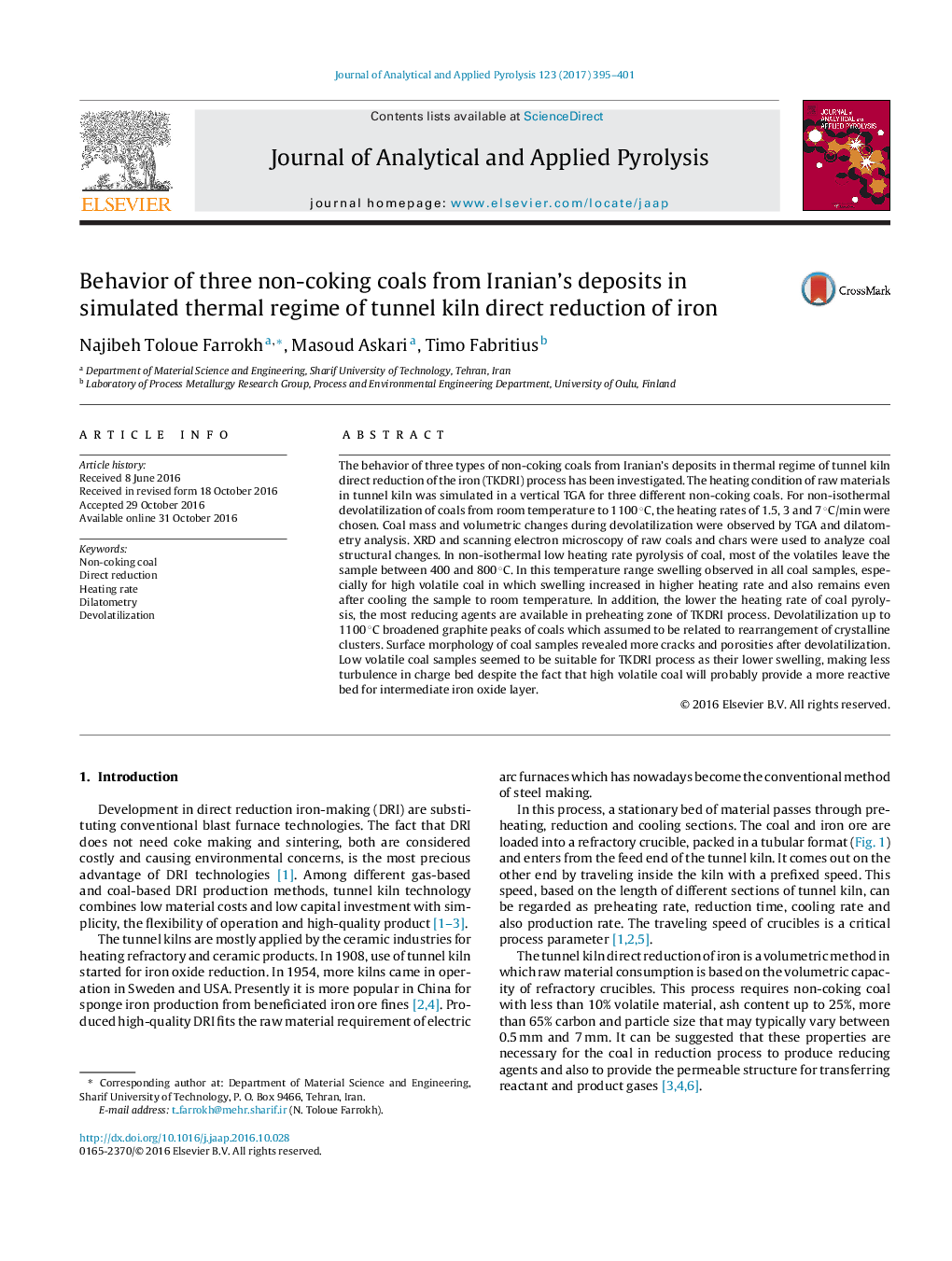| کد مقاله | کد نشریه | سال انتشار | مقاله انگلیسی | نسخه تمام متن |
|---|---|---|---|---|
| 5134558 | 1492954 | 2017 | 7 صفحه PDF | دانلود رایگان |

- Higher heating rates delay pyrolysis and extends it to match iron reduction point.
- Low volatile char contraction is not desirable for cooling part of TKDRI process.
- Swelling of high volatile coal is too much if it is aimed to be used in TKDRI.
- Cracks and open pores of char after devolatilization is desirable in TKDRI process.
- Structural ordering in addition to volatile percentage is affected by ash content.
The behavior of three types of non-coking coals from Iranian's deposits in thermal regime of tunnel kiln direct reduction of the iron (TKDRI) process has been investigated. The heating condition of raw materials in tunnel kiln was simulated in a vertical TGA for three different non-coking coals. For non-isothermal devolatilization of coals from room temperature to 1100 °C, the heating rates of 1.5, 3 and 7 °C/min were chosen. Coal mass and volumetric changes during devolatilization were observed by TGA and dilatometry analysis. XRD and scanning electron microscopy of raw coals and chars were used to analyze coal structural changes. In non-isothermal low heating rate pyrolysis of coal, most of the volatiles leave the sample between 400 and 800 °C. In this temperature range swelling observed in all coal samples, especially for high volatile coal in which swelling increased in higher heating rate and also remains even after cooling the sample to room temperature. In addition, the lower the heating rate of coal pyrolysis, the most reducing agents are available in preheating zone of TKDRI process. Devolatilization up to 1100 °C broadened graphite peaks of coals which assumed to be related to rearrangement of crystalline clusters. Surface morphology of coal samples revealed more cracks and porosities after devolatilization. Low volatile coal samples seemed to be suitable for TKDRI process as their lower swelling, making less turbulence in charge bed despite the fact that high volatile coal will probably provide a more reactive bed for intermediate iron oxide layer.
Journal: Journal of Analytical and Applied Pyrolysis - Volume 123, January 2017, Pages 395-401